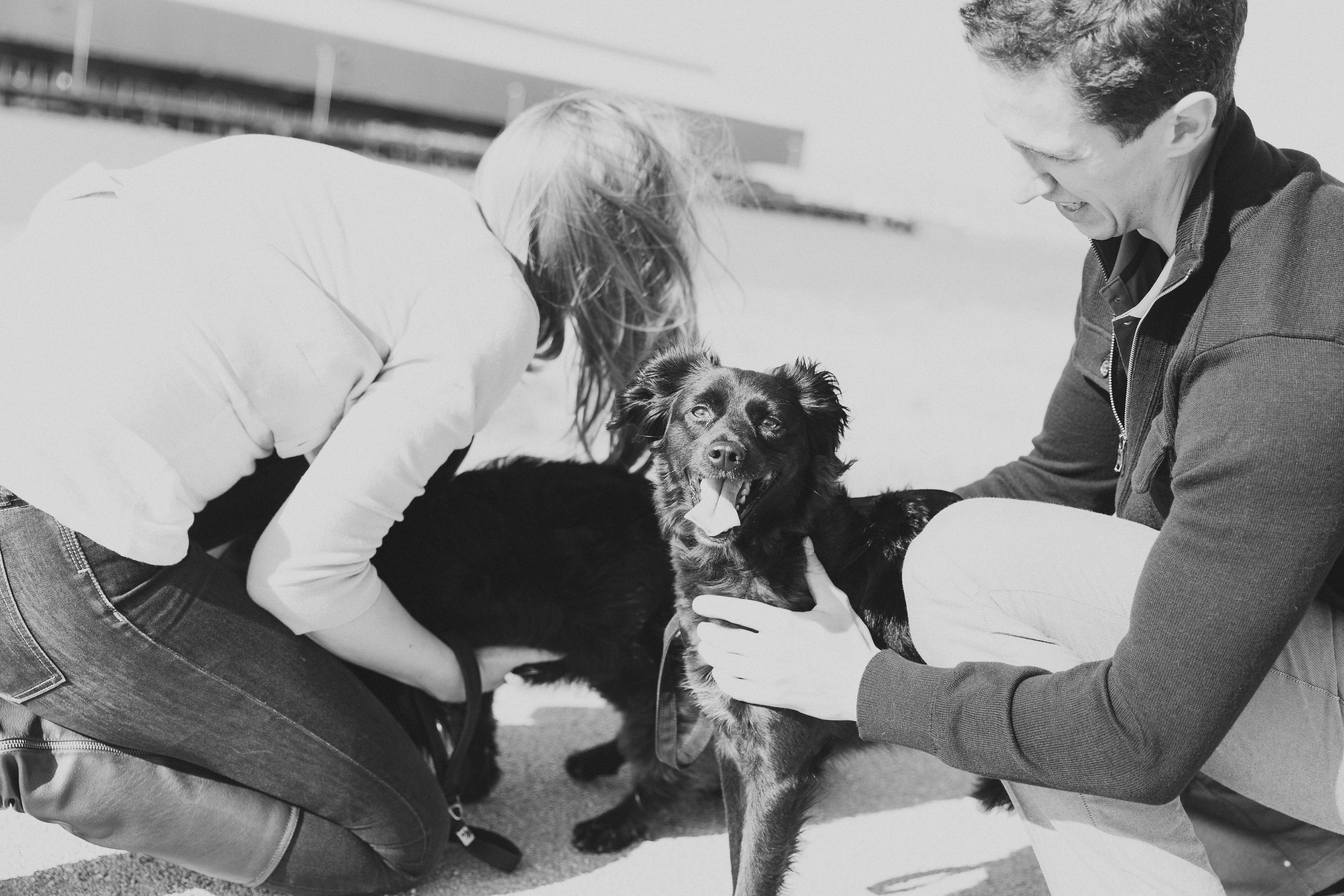When your pup is feeling ill, the last thing you want to do is torture them even more with their medication. It hadn’t been more than a few days and our new rescue pup had fallen ill. Instead of bonding over belly rubs and long naps on the couch we were learning the hard way, through trial and error, how to administer pills to our pup.
After a trip to the vet our newest member of the family was diagnosed with the dog flu. A wave of canine influenza swept through the city of Chicago in 2015 (an H3N2 strain). Dog owners were instructed to keep their pups far away from public spaces, like groomers, kennels, and parks. Subsequent visits to the vet meant entering on the cat side of the office to lessen the chances of infecting healthy dogs.
We were sent home with lots of bottles of pills. You can skip to the ‘what not to do’ portion of this article to get an idea of some of the cringe-worthy mistakes we made while attempting to get our dog to take his medicine. File that behavior under – Do not repeat. Ever.
“File that behavior under – Do not repeat. Ever.”
We did however learn a few techniques that worked along the way. Luckily, not only did our pup make a full recovery, but he didn’t hold a grudge against us for not knowing how to give him his medicine.
Buy a pill cutter. Sometimes the vet doesn’t have the time or ability to split the pills for you. Or maybe you arrived home and upon opening the bottle realize that the dosage needs to be halved. A simple pill cutter will quickly solve this problem.
Crush the pills. First, ask the vet if it’s okay to crush the pill. As long as you have the green light from the doctor this is an easy method for disguising their medicine. I recommend finding a wet dog food that has the word ‘stew’ in the name. A word of caution, you don’t want your dog to stop eating their regular food. If they start associating their food bowl with terrible tasting medicine, they may stop eating, which is no good. Make sure you monitor their eating patterns while you’re administering their medicine over the coming days (or weeks).
Hide the pill in treats. The trick here is to find foods that your dog likes to eat. Our pup was treat-averse when we first got him, so here are some of the foods that worked for us after much trial and error.
#1 Cheese
#2 Freeze dried liver
#3 Chicken
Play a game. Distract your dog from that fact that you’re giving them a pill by using a game or practicing simple obedience tricks that you know they can do.
The process:
Step 1: Let your dog see that you’re preparing to give them a treat. This could mean heading into the kitchen and saying, “[insert your dog’s name here], it’s time for a treat!”. Or walk over to their treat shelf or drawer and make sure they either see you walking over there or hear the familiar sound of the door opening. The idea is to get them excited about eating something tasty.
Step 2: Give your dog a small treat without a pill. My strong recommendation is to make them work for the treat. Ask them to sit or lie down. Have them perform a simple trick that you know they can do. This makes it seem like everything is normal and you’re not up to something sneaky like slipping in a pill with their delicious treat! Give them praise and lots of pets in celebration of a job well done.
Step 3: Give your dog a larger sized treat with the pill hidden inside. Again, ask them to perform another simple trick. Watch them eat the treat and make sure they don’t spit the pill back out. If your dog does find the pill and doesn’t eat it try either breaking the pill into smaller portions or hiding it in a different type of treat.
Step 4: Repeat step 2. Use different foods and treats to give them their medication. That way your dog is less likely to associate getting a pill with any one type of food.
What not to do
Location: Don’t always give your pet their medication in the same location. They’ll start associating it with ‘pill time’ and will only add to their stress.
Space: Unless you need to hold onto your dog in order to administer their medication, give them space to move around. Don’t force them into their crate or a constricted space in order to take a pill.
Body language: Don’t tense up. Your dog knows when you’re stressed.
Voice: Be calm and don’t raise your voice.

Hilary Fosdal believes that life is better with a dog. Her dogs approve this message.
I’d love to know what tips and tricks you use to get your dog to take their medicine. Leave your helpful advice in the comments below!
If you enjoyed this post, you should read “How Anatomy And Physiology Determine Your Dogs Health Risks” here
